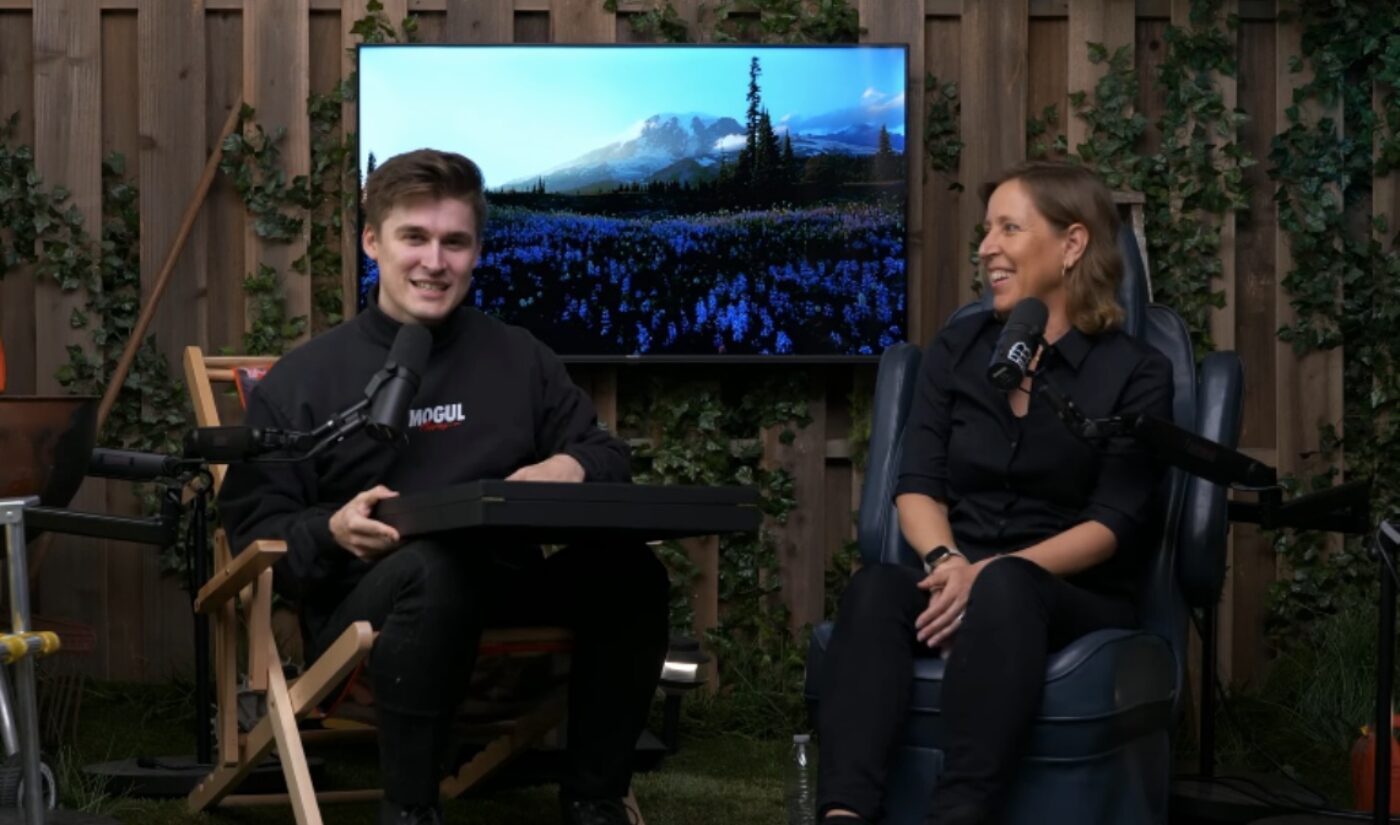Late last year, YouTube signed Ludwig Ahgren to an exclusive deal. Once the ink was dry, the streaming star immediately invited YouTube CEO Susan Wojcicki to sit down with him for a chat.
Want to come on my podcast
— ludwig (@LudwigAhgren) November 30, 2021
Subscribe to get the latest creator news
Wojcicki wasted little time before deciding to take Ahgren up on his offer. In a recent episode of The Yard, YouTube’s top exec and its big-name signee enjoyed a wide-ranging conversation that spanned multiple hot topics in the digital video industry.
There was plenty of fluff in the interview. Wojcicki brought Ahgren a chair with his face on it, and the streamer quizzed his guest on some emotes associated with her competitor Twitch. At the same time, Wojcicki provided open and honest insights about the “serious” topics Ahgren broached, and her candor earned her props from the comments section.

The entire interview is available on Ahgren’s YouTube channel.
If you would prefer an abridged version, allow me to run through some of the main points of conversation the two power players discussed:
YouTube knew the decision to hide dislikes would be unpopular — but Wojcicki doesn’t always see the hate coming.
Obviously, Ahgren had to ask Wojcicki about the controversial decision to make dislikes invisible to YouTube viewers. The 23-year Google vet explained that her team is always calculating how creators will react to major updates, and in that case, the resulting backlash was expected. So then why did YouTube go through with the change? Wojcicki explained that the small creators who are positively impacted by hidden dislikes don’t have amplified voices, so they aren’t heard as loudly as the naysayers.
“We have to do what is the right thing for the ecosystem as a whole,” Wojcicki told Ahgren. She explained that the people running the platform “have access to data that individual creators may not have.”
Despite all that data, community reactions sometimes catch YouTube by surprise. For example, Wojcicki admitted that she did not expect the most-disliked video in YouTube history to receive such a negative response. “We had no idea that the Rewind video in 2018 was going to go badly,” she said.
YouTube’s plans for NFTs may involve Content ID.
Wojcicki owns “a few” NFTs, and she likes the potential of non-fungible tokens as a revenue stream for creators. That’s why she’s making moves to support that ecosystem on her platform. In her appearance on The Yard, she called NFTs an “important form of monetization” and suggested that YouTube is well-positioned to embrace social tokens.
In particular, Wojcicki believes that YouTube’s Content ID system sets the platform up to verify the NFTs that creators mint. It makes sense if you think about it: YouTube has invested tons of resources to ensure that it can tell honest videos from stolen ones as accurately as possible. So if someone tries to sell another creator’s video as an NFT, YouTube has the tools to intervene. “We are in the best position to verify which assets belong to which creators,” Wojcicki told Ahgren.
A more “scaleable” form of YouTube Shorts monetization is coming.
Like other platforms that are monetizing short-form content, YouTube has created a fund to deliver payouts to popular micro-video creators. Those funds, however, have drawn criticism because their payouts will be diluted as the pool of eligible recipients increases.
Wojcicki understands that problem, which is why a “new form of monetization for Shorts creators” is on the way. She was quiet about what that revenue stream would look like, but she did mention that it will be “more scaleable.” Aside from that detail, we’ll have to “stay tuned” to learn what YouTube Shorts has in store.
Ludwig is moving the needle on new YouTube features.
Obviously, YouTube wants to keep its high-profile signee happy, so Wojcicki is listening closely to his demands. On his podcast, Ahgren shared a “dream” for a new channel page, which would filter long-form, short-form, and live streaming content into separate tabs. If you think that sounds like a good idea, Wojcicki agrees with you. “I’ve heard this from creators and we are working on it,” she said.
And then there are the emotes. On YouTube, Ahgren doesn’t have as wide a selection of reactions as he does on Twitch, but he may soon be able to chat about “poggers” content with the proper image. Wojcicki told him she has alerted her team about his desire for more emotes.
On some topics, Wojcicki can’t say much.
Even YouTube’s CEO is only partially aware of the mechanisms behind her platform’s mysterious and all-important algorithm. Ahgren asked her to explain its inner workings, but she had mostly vague responses. “It varies,” she admitted.









